Samdech Preah Maha Ghosananda (1929–2007) was a Cambodian Theravada monk whose greatest call to spiritual action came in response to the Cambodian genocide. Maha Ghosananda is best known for emerging from a decade-long retreat to assist the survivors of the genocide, whose lives were upturned by the Khmer Rouge regime. He was a key figure in the revival of Cambodian Buddhism after the terrors of the 20th century, and from the very beginning, Maha Ghosananda offered his peace ministry even to members of the Khmer Rouge.
Maha Ghosananda means “Great Joyful Proclaimer.” He was born in a small town in Takeo Province, and began serving as a temple boy in his community at the age of eight. He showed a strong interest in monastic life, which impressed the monks and they encouraged him to pursue his calling further. Ghosananda asked his parents’ permission to become a monk when he was 14 years old, and they granted it.
Maha Ghosananda received his bachelor degree from the Buddhist University in Phnom Penh and went through postgraduate studies at the Buddhist University of Battambang. He later received a doctorate from Nalanda University in Bihar, India.
At the age of 36, Maha Ghosananda left Cambodia and made his way to the remote forests in southern Thailand, where he met the well-known meditation instructor Ajahn Lee Dhammadaro. While Maha Ghosananda was practicing meditation in Thailand, the United States started bombing Cambodia as part of its operations in the Vietnam War. In 1970, the US invaded and overthrew the Cambodian government, imposing a pro-American military regime. In response, the Communist Khmer Rouge insurgency led by Pol Pot (1925–98) expanded in 1975, and marched into Phnom Penh, where they carried out a genocidal plan to remake Cambodia and establish an autarchy. This led to the Cambodian genocide, which lasted until 1979. The Khmer Rouge also had a policy of destroying Buddhist temples and monasteries.
In the ensuing exodus from the Cambodian capital and the butchery of around 25 per cent of the nation’s population by 1979, all of Maha Ghosananda’s family members were killed. Only monks who were living outside of Cambodia, including Maha Ghosananda, were able to escape the “killing fields.” By the time the Vietnamese army had toppled Pol Pot’s regime, only 3,000 of Cambodia’s 65,000 monks remained.
When the US started bombing his country, Maha Ghosananda had only been at his monastery in Thailand for four years. He would remain in his Thai jungle retreat for an additional nine years. After learning of the terror and savagery that had swept across his homeland, Maha Ghosananda, full of compassion, packed what little he had and headed toward Sa Kaeo Refugee Camp, the first “official” refugee camp established on the Thai-Cambodian border. He had journeyed alone before arriving at Sa Kaeo, making him one of only a handful of Cambodian monks who were able to slip past the Khmer Rouge. After his initial trip to Sa Kaeo, Maha Ghosananda committed the rest of his life to promoting world peace and rebuilding Cambodia.
Many Cambodian refugees were able to relocate to North America and Europe with Maha Ghosananda’s help. When Maha Ghosananda himself arrived in the US in 1981, he began building temples that would serve as community centers for the new immigrants. Anecdotally, it was said that almost all of the Cambodian Buddhist temples overseas were founded by Maha Ghosananda, or were built with his support. He spent years working to raise awareness of Cambodia’s problems, co-founding the Interreligious Mission for Peace and taking on the role of a consultant for the Cambodian government to the UN Economic and Social Council.
After being elected as the country’s Supreme Patriarch in 1988, Maha Ghosananda led a group of monks to the UN-sponsored peace talks. The culmination of Maha Ghosananda’s activism was his so-called dhammayietras, which were essentially marches for peace through war-torn, landmine-filled areas of Cambodia. For this audacious endeavour, Maha Ghosananda won praise from all over the world and was nominated for the Nobel Peace Prize five times.
Maha Ghosananda’s peace marches
Maha Ghosananda began the first peace walk or dhammayietra in 1992, inspired by the Buddha, who frequently went on long walks with his disciples, often criss-crossing northern India, for religious and even quasi-political interests (such as making a statement to kings with whom he disagreed). Dhammayietra is a Khmer word that means “pilgrimage” but is frequently translated as “pilgrimage of truth.” It is formed from the Pali dhamma and Sanskrit yatra (“walk” or “procession”). Maha Ghosananda said that they needed to travel to the scenes of human suffering, including refugee camps and combat zones, and turn them into their temples. The point was to be fearless and to show the world how the spirit of Buddhism transforms one’s deluded attitudes to suffering and death, making the practitioner able to walk into zones of woe and pain with equanimity and also compassion. The aim of the walkers was to change society and to awaken the Cambodian people.
The first dhammayietra started in refugee camps, continued across Thailand’s border and through various areas of conflict, and finally arrived in Phnom Penh. Thousands of people would gather along the route to support the walkers. Maha Ghosananda gave lectures on peace and harmony in every village. To receive blessings, even soldiers would lay down their guns. Author Matthew Weiner notes the following about the first dhammayietra:
The large numbers of people who joined or assisted the walk is a testament to the Dhammayietra as a vehicle for overcoming fear, and an expression of the eagerness for peace. Both poor villagers and soldiers joined the march or received blessings from the monks. Soldiers commonly laid down their arms and explained to the walkers that they did not want to kill any more people. In perhaps the most remarkable response, villagers gathered spontaneously in the early mornings to receive a water blessing from the monks as means of psychological purification.
(Weiner 2003, 112)
The second dhammayietra in 1993 was even riskier. It took place right before the first nation elections since the fall of the Khmer Rouge, and voters were still plagued by violent incidents. At one point, a grenade was tossed into the crowd only a few steps from Maha Ghosananda. Maha Ghosananda wasted no chance in turning this nasty scare into a teaching, reassuring scared voters that the experience of dread was always temporary. More lasting were the brahma-viharas and respect for the human rights of all war victims. Focusing on these would fortify activists and voters to make their voices heard, fill in their ballot, and do their citizen’s duty even as the shadow of the Khmer Rouge lingered.
The dhammayietra, claiming no political affiliation, later went into the still-active war zone of western Cambodia. The participants were not simply told where to walk, of course: landmine awareness, mediation, defusing tense situations, and nonviolence were all topics covered in the training given before the peace walk. Leaders of the walk shared how to conduct negotiations. Sure enough, the peace walk soon encountered less-than-ideal circumstances. Troops barred their path as they drew closer to the battle. After taking in local refugees, they looked for an alternative route to their objective. The situation rapidly escalated and deteriorated. The remnants of the Khmer Rouge attacked them even as they traveled in the company of government troops. In the crossfire, three monks and a nun were killed. The remaining marchers were captured and brought to a Khmer Rouge camp as prisoners. But just as all hope seemed lost and the peace walkers seemed destined for a kind of martyrdom, the Khmer Rouge commander expressed regret and informed them that he desired peace, urging them to continue working without regard to party loyalties.
There were three more dhammayietras, which took place annually. The goal of the 1995 walk was to eradicate landmines. The 1996 walk was to raise awareness about deforestation, which was, in Maha Ghosananda’s mind, tied closely to napalm bombs, manmade fires, and illegal logging which, in turn, was caused by political strife, foreign interference, and civil war. The pilgrimage path was traversed by the walkers as they planted 2,000 trees while passing through some of the worst-affected areas in the country. The goal of the 1997 peace walk was to promote peace between government forces and the Khmer Rouge.
The walkers also met Leng Sary, who had succeeded Pol Pot as the second-in-commmand of the Khmer Rouge. Maha Ghosananda offered a simple blessing for Leng Sary after he begged for a pardon and promised to work for peace. This was not an easy call: Maha Ghosananda received a good deal of criticism for this decision. However, he replied that if people know their crimes and ask for forgiveness sincerely, then the Buddha pardons them.
The dhammayietra’s ultimate goal was to manifest peace and show how it was a more preferable outcome to all others, especially war. Meditation was the first requirement of peace walkers because, in Maha Ghosananda’s view, walking in meditative peace is necessary for an effective and morally sound dhammayietra.
Maha Ghosananda’s social teachings
The social teachings of Maha Ghosananda are, like many of the best Buddhist teachers, straightforward but difficult to implement without sincere practice. He argues that in order to bring about societal peace, one must first find inner peace, and that Buddhist meditation is the best way to do so: the key to social revolution is personal transformation.
As an expressly Theravada peacemaker, Maha Ghosananda (although never intentionally) helped greatly in debunking the stereotype (which was especially common in East Asia) that Theravada Buddhists were insular and focused on salvation for the self. Maha Ghosananda’s teachings tied inner practice and traditional Theravada pedagogy directly to social progress.
Maha Ghosananda saw Cambodians as his family, making human-level reconciliation inevitable even for what outsiders would call “monsters”—the Khmer Rouge, the architects of the Cambodian genocide, and its enforcers. By using the Buddhist story of the murderer-turned-saint Angulimala, Maha Ghosananda made the assertion that even the worst offenders can change and be reintegrated back into society. Only when everyone—victims and offenders alike—is transformed through inner peace will society truly be healed.
Looking back on what he aspired to achieve with the dhammayietra, Maha Ghosananda used techniques such as metta (loving-kindness), samadhi (concentration), and vipassana (insight) to promote internal peace and effective nonviolent action. These techniques are inherently understood as moral actions that promote social well-being. Maha Ghosananda instructed his followers by example to view meditation as a component of their peace walks. This was his attempt to show how mental transformation can lead to outward change. This is best expressed in the now-famous poem by Maha Ghosananda, which is also his most famous quote. Perhaps it is easy to see why, given how often Maha Ghosananda stressed the connection between our inner and outer worlds. The creation of a more peaceful world through more peaceful people was his life’s mission.
The suffering of Cambodia has been deep.
(Georgetown University)
From this suffering comes Great Compassion.
Great Compassion makes a Peaceful Heart.
A Peaceful Heart makes a Peaceful Person.
A Peaceful Person makes a Peaceful Family.
A Peaceful Family makes a Peaceful Community.
A Peaceful Community makes a Peaceful Nation.
A Peaceful Nation makes a Peaceful World.
May all beings live in Happiness and Peace.
Maha Ghosananda’s stature is significant. Just as remarkably as his specific work, as a senior monastic he succeeded in being many things to many people. He was a forest monk, a father figure for Cambodian children, a meditation teacher for Western students, a peacemaker at the United Nations, and a leader of Khmer refugee groups all over the world.
References
Matthew Weiner. 2003. “Maha Ghosananda as a Contemplative Social Activist.” Christopher Queen, Charles Prebish and Damien Keown (eds.). In Action Dharma: New Studies in Engaged Buddhism. London: RoutledgeCurzon.
See more
The Dhammayietra: Patience, compassion, understanding, and a border conflict (Part 1) (Georgetown University)
Related features from BDG
Promise of Peace
Cultivating Peace: Buddhist-Inspired Approaches to Conflict Resolution
UPDATE: Reflections on Emergency Flood Relief in Battambang, Cambodia
Peace, Planet, Pandemic, and Engaged Buddhism: From a Divided Myanmar to a Divided World
Related news from BDG
30 Stolen Antiquities Repatriated to Cambodia from US
Sustainable Living in Cambodia: Buddhist Monks Farm Organic Produce
Engaged Buddhism: JTS Korea Distributes Emergency Flood Relief in Cambodia
Monks and Activists Hold Buddhist Ceremony to Address Deforestation in Cambodia
Rights Groups Criticize Treatment of Cambodian Buddhist Monk Arrested in Thailand




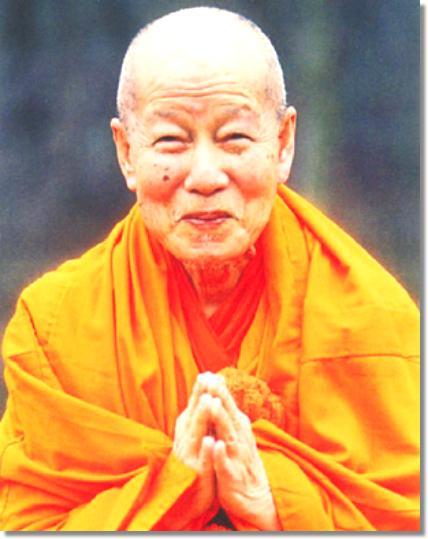

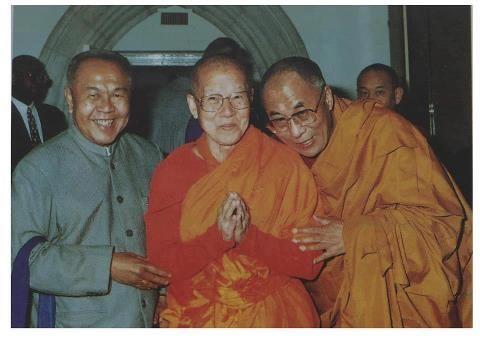
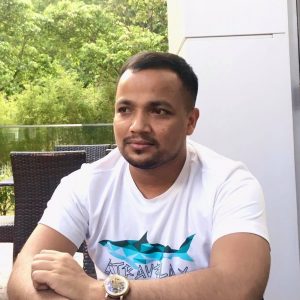





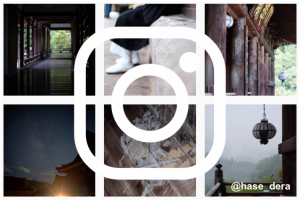
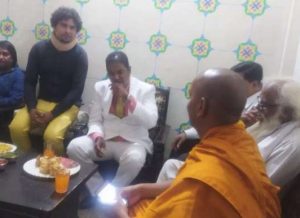



I am so pleased to see that Maha Ghosanada is not forgotten. I wish there were more English language materials on this great social activist and Buddhist. We sorely need leaders like him, and I appreciate that you and Buddhistdoor have reminded us of the amazing work of this great soul. thank you